

|
| Home Previous Next | |
|
|
|
[Click on any photo to enlarge it] Day Four - Xi'an, Shaanxi ProvinceJade and the Terracotta Warriors, Part IIThe Terracotta WarriorsFinally it was time to head to the Emperor Qin Shi Huang's Mausoleum Site Museum - the Terracotta Warriors. Reuben and I were very excited. As we walked from the parking lot to the main entrance, there was a huge statue of Emperor Qin Shi Huang. 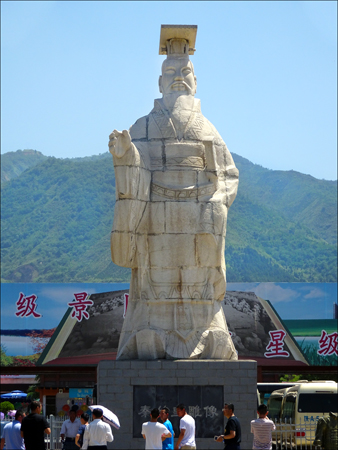
Statue of Qin Shi Huang
We were told it was rather a long walk from the main entrance to the actual museum site and for a small fee we could take a tram. We would have to walk back, but the tram would take us in. The wheelchair, however, wouldn't fit on the tram, so we hung it off the back and Peter and Carrol very kindly held on to it for us. 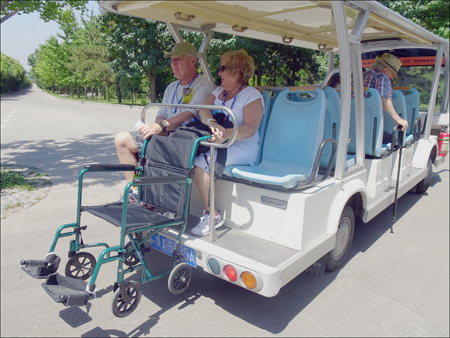
The buildings at the museum site are very beautiful and imposing structures to house this treasure. 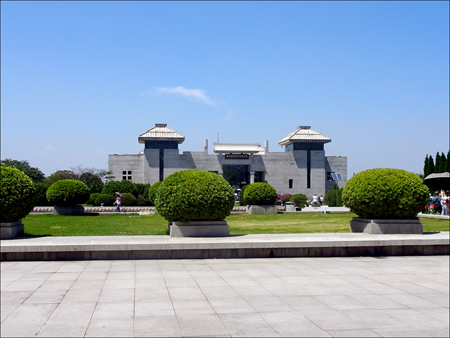
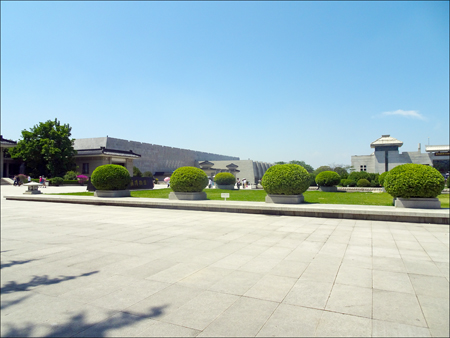
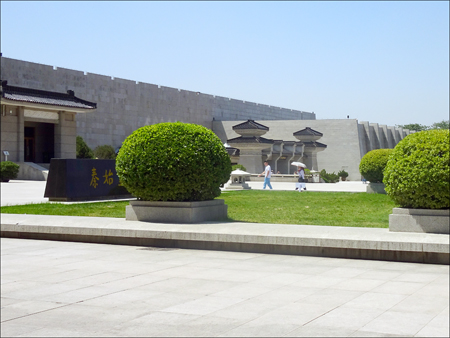
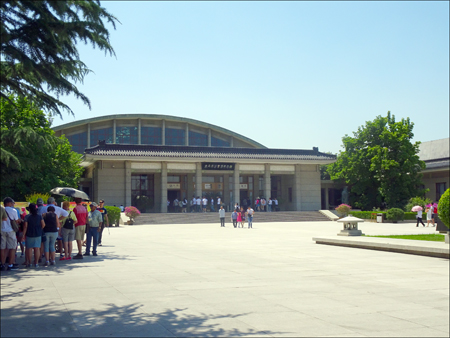
March 1974 was a particularly dry time, so a peasant farmer, Yang Zhifa, decided to dig a well to irrigate his crops. On the third day his hoe dug out the neck of a statue. It was about the size of a bowl. He and his workmates decided it was probably the site of an old kiln and if they dug carefully they might find some bowls and jars that would be of use to them. But then they dug up the torso of a statue, followed by many bronze items. They realized they had found something much more interesting - possibly a temple. So they took the pieces to the local Museum. The experts at the museum discovered that the fragments were from the Qin Dynasty. On the Great Wall page, we talked about Qin Shi Huang. He was the first Qin Emperor who unified all of China. His centralized authoritarian regime lasted for 2000 years. He standardized writing, currency and measures, and is called the father of the Great Wall. His tomb - still unopened - is very near here and these warriors were made to protect his tomb. After archeologists began work on the site, and continued to find a seemingly unending quantity of warriors and artifacts, a building was built over the top in 1976 to protect the site and also give the public an opportunity to view some of these works. The building covers an area of 19,136 square yards. It has a steel arched roof so that it can have no interior supports. The pit is an east-west rectangular pit, measuring 252 yards long, 68 yards wide and 16 feet deep. There are estimated to be 6,000 warriors in this pit, most of which have not been unearthed yet. In addition to the warriors and horses, a large variety of weaponry was found - bronze swords, spears, crossbows and arrows. “The warriors are marshaled into a well-organized battle array composed of the infantry and cavalry. The vanguard includes 210 foot soldiers divided equally into three lines. The cavalry and war chariot follow close in line, forming the main body of the battle formation. The foot soldiers are alternated with the chariots drawn by horses, lined into 38 columns. On both the northern and southern sides of the war formation stand 180 warriors which serve as flank guards. The rear guards are on the western end, with two lines facing east and another facing west. Some soldiers are armed with battle robe, and some are equipped with armor.” Unfortunately, this pit originally had a wooden roof over the warriors. After Qin Shi Huang's death in 210 B.C. there was a peasant uprising and construction of the terracotta warriors was halted. They set fire to the pit causing the roof to collapse and crush most of the warriors and horses inside. This has made the archeology much more difficult. The first thing that struck me when we went into the building was the enormity of it. The building itself is so large and so impressive. You could hardly see from one end to the other. The main entrance was incredibly crowded. We could hardly get up to the front. With a little patience, we did make it. 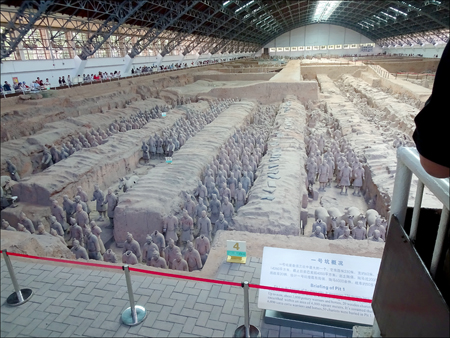
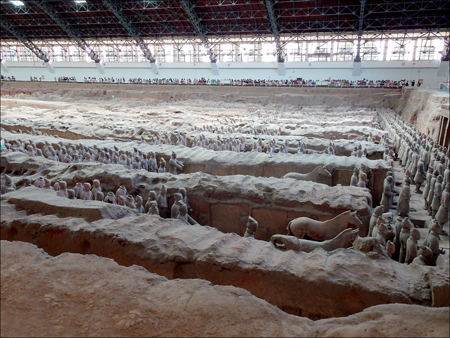
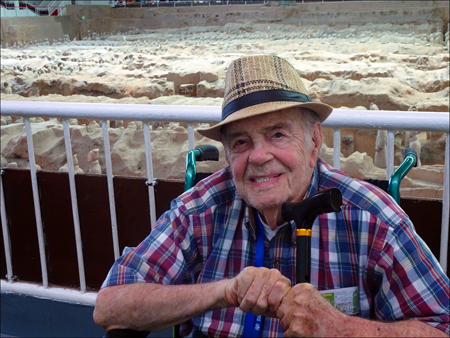
A happy Reuben in front of the Terracotta Warriors
The soldiers were so amazing to see. It's a far cry from knowing there are over 1,000 soldiers to actually seeing them. So many. 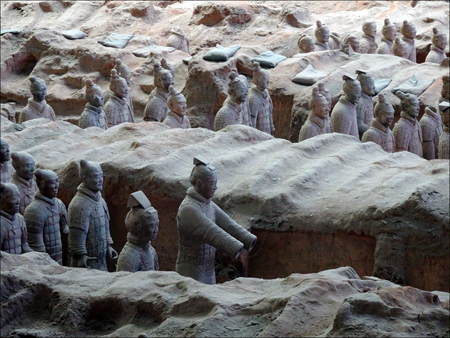
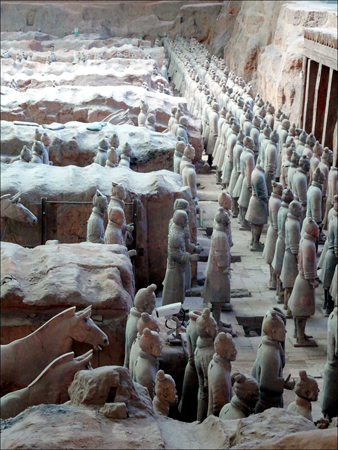

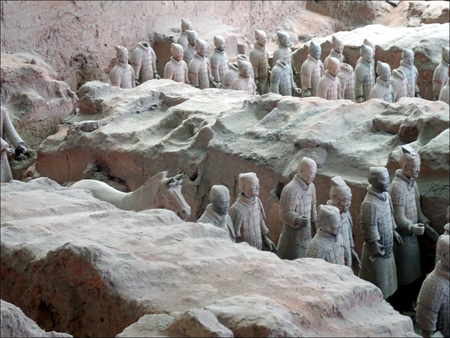
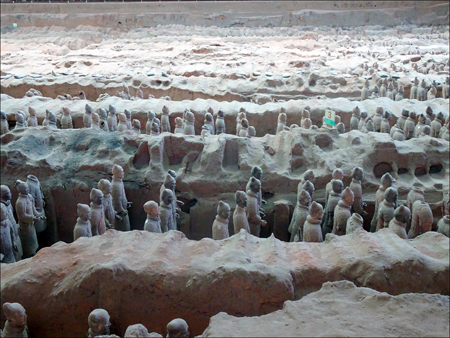
As we made our way toward the back you could see that this was still an active archeological site. 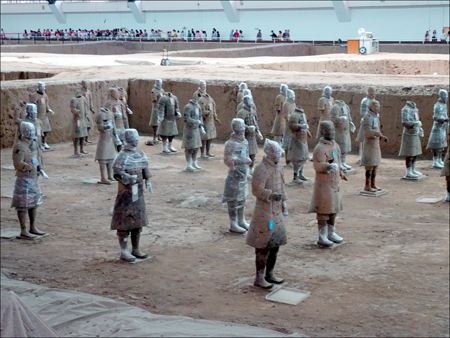
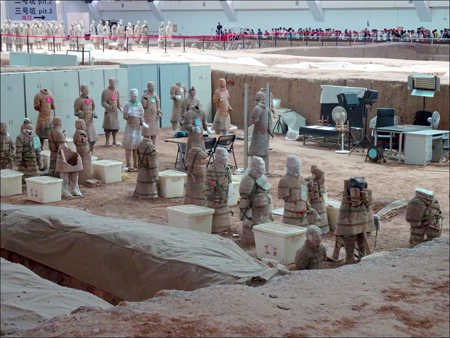
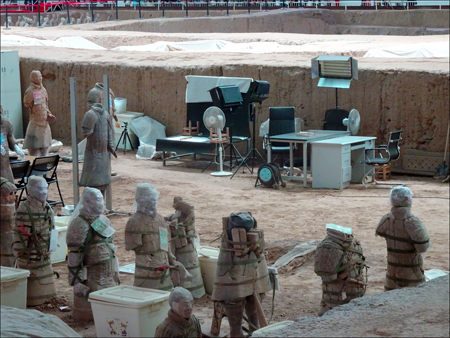

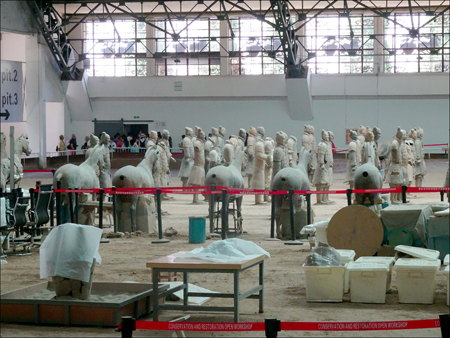
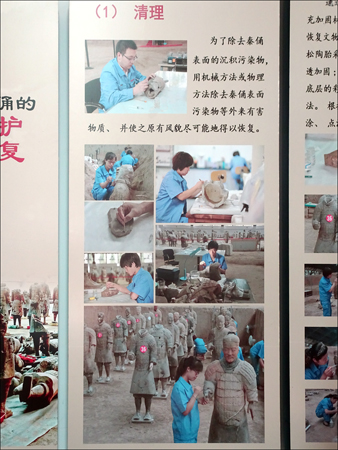

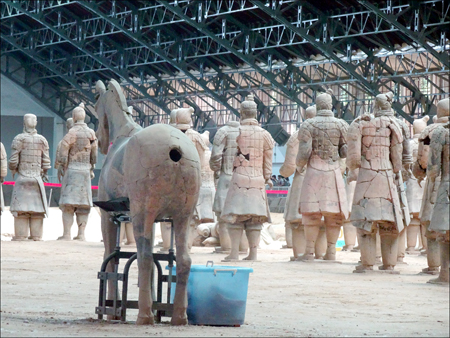
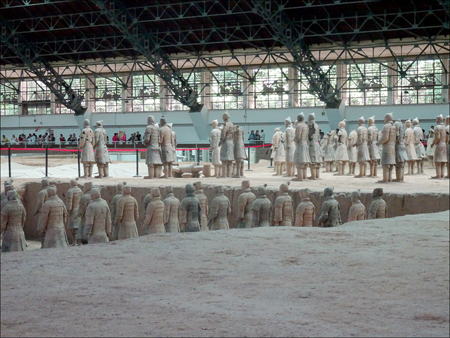

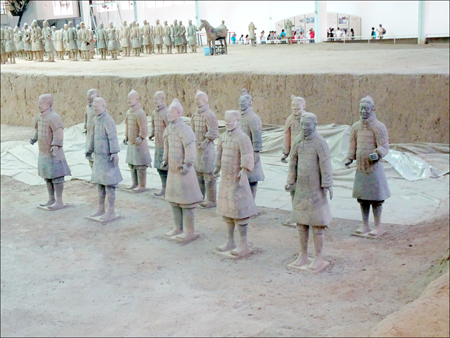
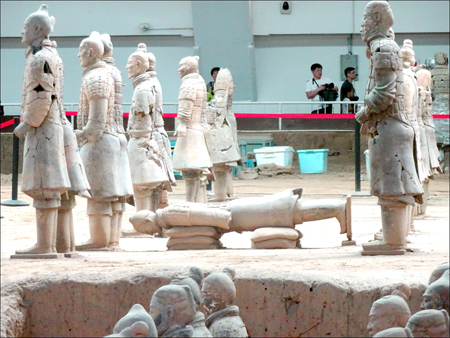
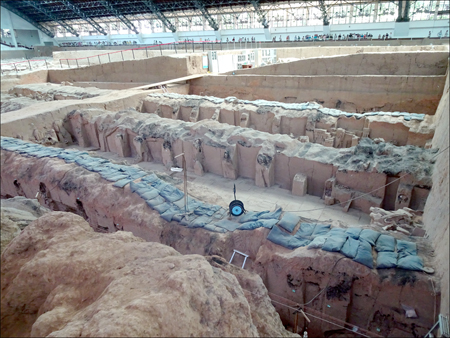
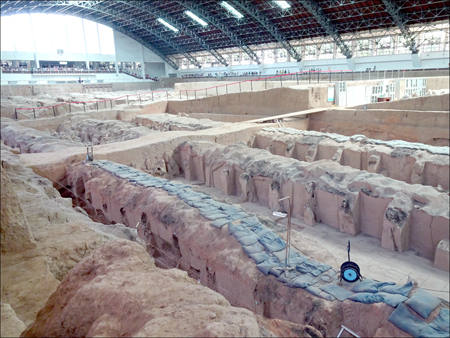
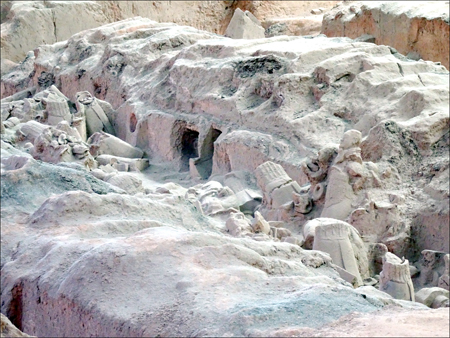
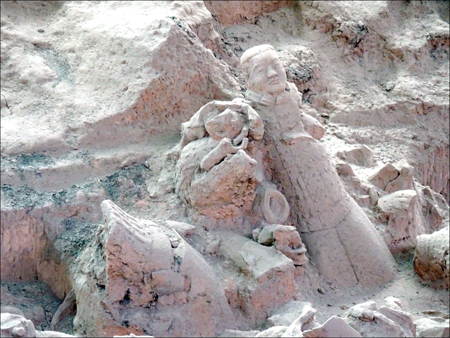

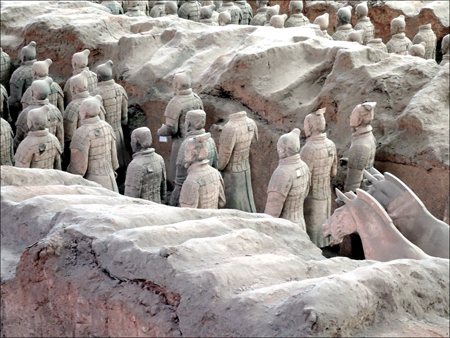

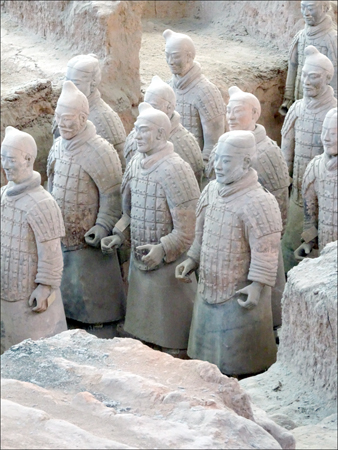
But, this is only the beginning! This building is called Pit One because there are two more pits in addition to this one. Actually, there are a total of four pits, but Pit Four is empty. Perhaps it was never finished. This place is enormous. 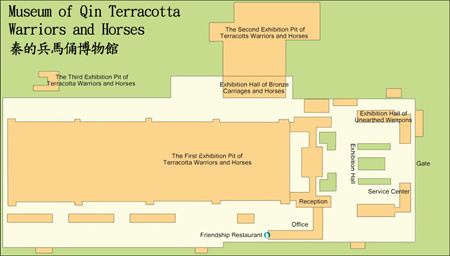
Pit Two lies about 22 yards northeast of Pit One. It was discovered in 1976, but excavation wasn't begun until 1994. It measures 136 yards from east to west and 107 yards from north to south, but it is L-shaped so only has an area of 7,176 square yards. The pit is 16 feet deep. 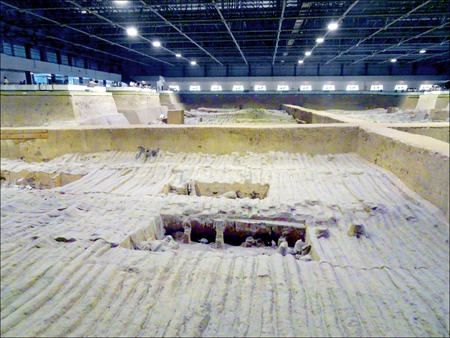
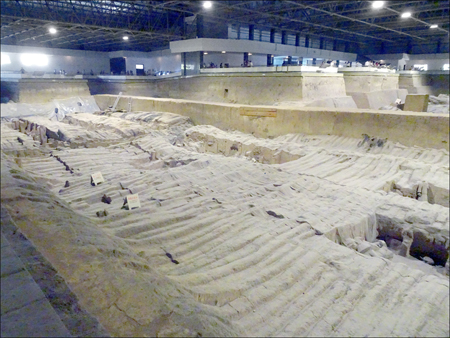
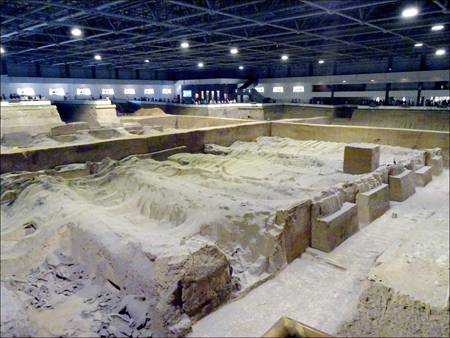
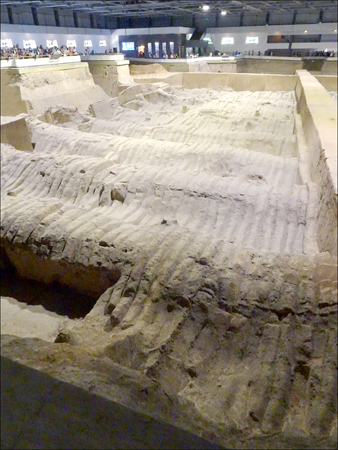
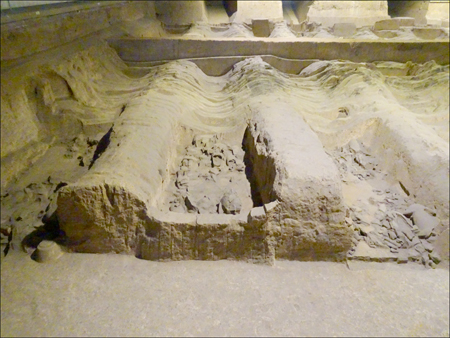
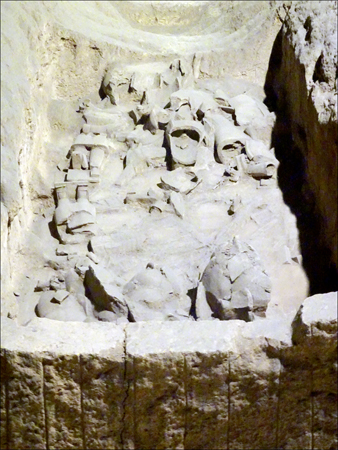
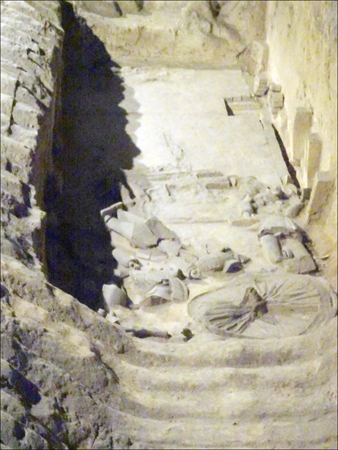

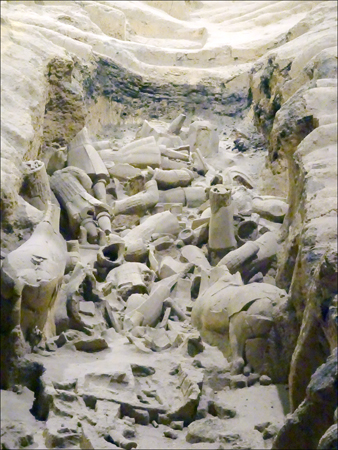
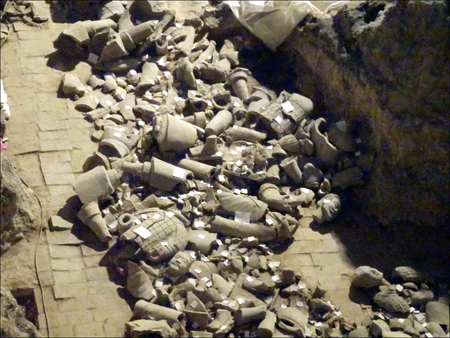
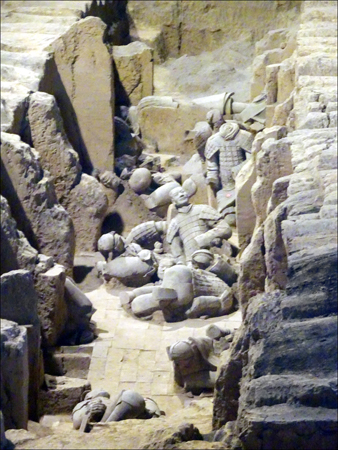
Even though Pit Two was burned like Pit One, it has had some of the most spectacular finds. The units of armed forces are more complete and the combat formations are more complex. It is estimated that there are more than 80 war chariots. And thousands of bronze weapons have been found in this pit. Here is where they found the terracotta General. They also found a kneeling archer and a warrior with a saddle horse. These have been set aside in glass display cases for more in-depth viewing. 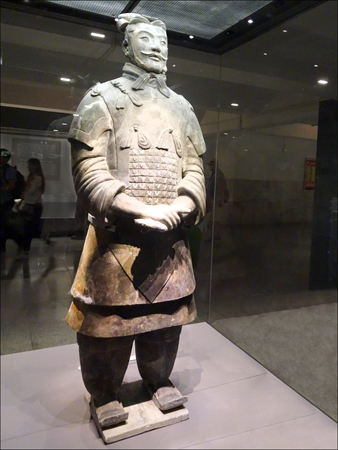
Terracotta General
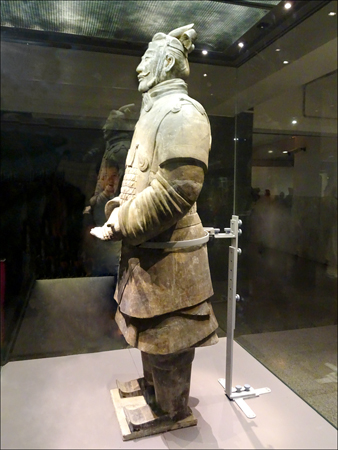
Terracotta General
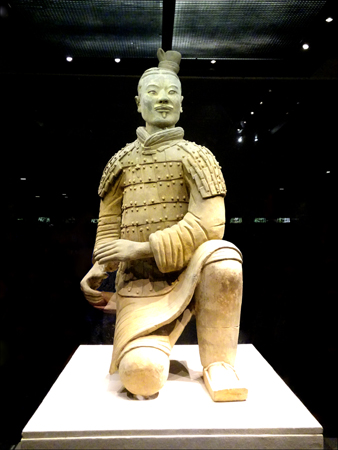
Kneeling Archer

Kneeling Archer
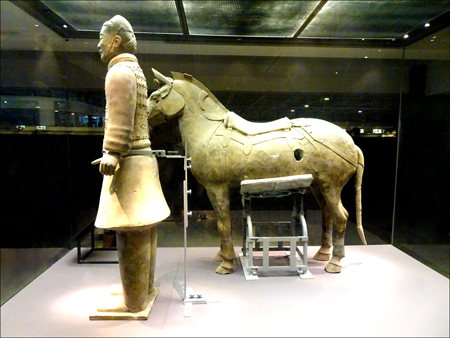
Warrior with a Saddle Horse
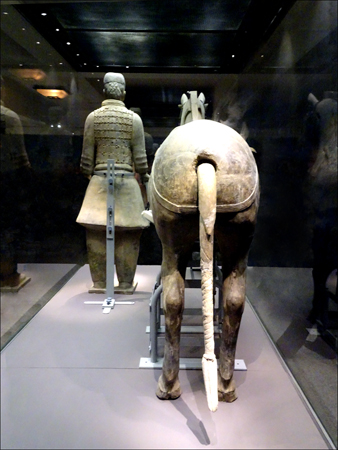
Warrior with a Saddle Horse
Pit Three is the smallest of the pits at only 622 square yards. It is built in the shape of a 'U' and is 19.2 yards from east to west and 23.4 yards from north to south. It is 15.7 feet deep. Pit Three was never burned like the other two pits so the warriors unearthed here are in much better shape than the others. Pit Three appears to be the command center for all the groups in the other two pits. There are 68 warriors, 4 horses and one chariot. There are passageways on either side of the horses and chariot and the 68 warriors line these chambers. 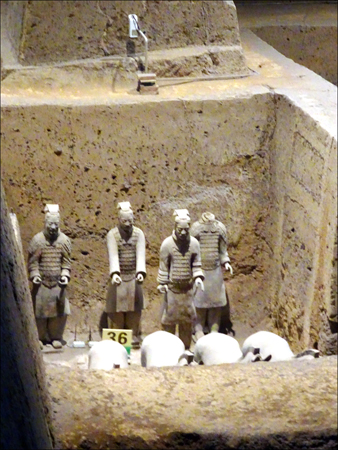
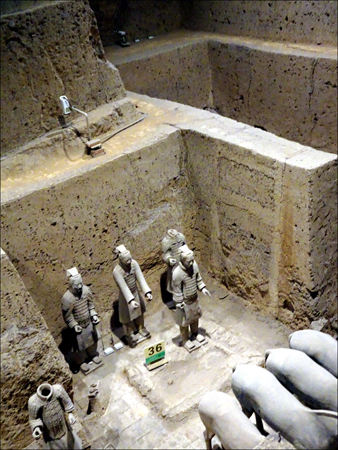
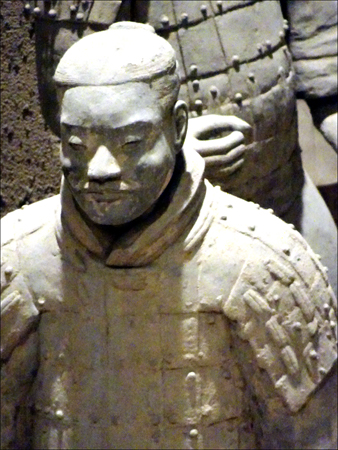
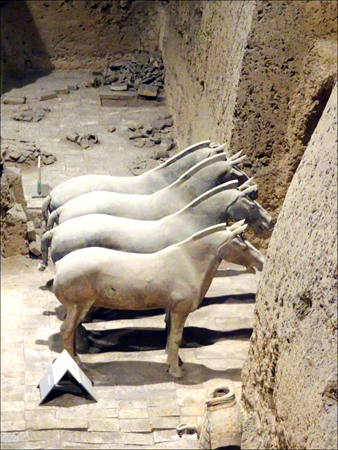
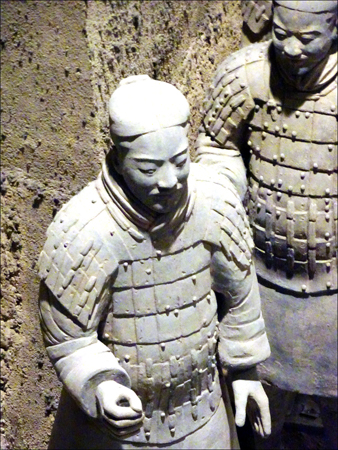

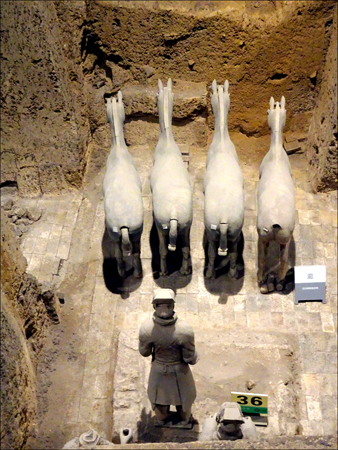

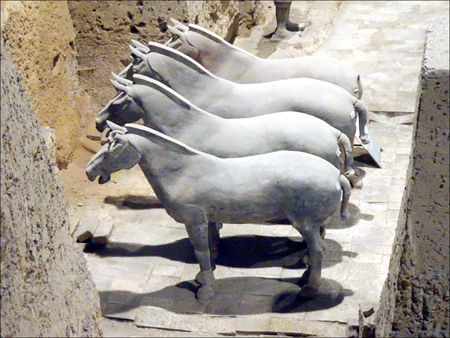
Many of the warriors in this pit are missing their heads. No one knows for sure exactly how the heads went missing. During the excavations a villager came forth and presented the archeologists with one of the heads. He admitted that he had dug out one of the heads himself. Perhaps the other heads met a similar fate. 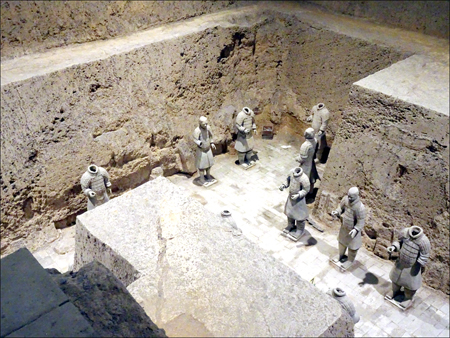
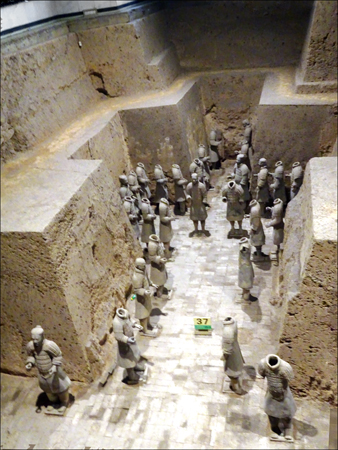
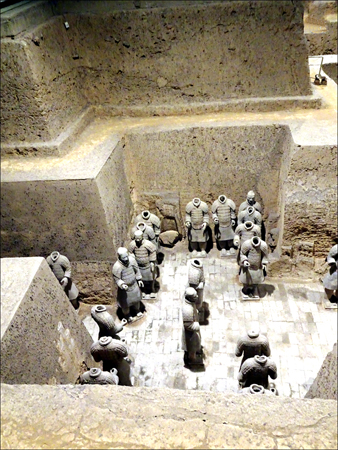
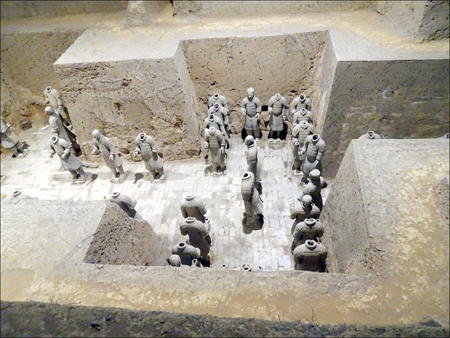
The site of all of these pits is about 2km from the actual tomb of Qin Shi Huang. The tomb itself has never been opened and, as far as anyone can tell it was never looted through the centuries. There are historical stories describing the tomb, but so far that's all the evidence there is. The tomb was originally larger than the great pyramid of Egypt, although it has weathered down over the years. It looks today like a hill covered in vegetation. As soon as Qin Shi Huang took the throne at the age of 13 he began building his final resting place. It took 38 years to build and wasn't complete until after his death. The historians tell us that there are many buildings underneath housing treasures. There is an underground palace studded in gems. In the central chamber of the tomb the constellations and heavenly bodies are represented with inlaid pearls and gems. The two great rivers of China, the Yellow River and the Yangtze River, were simulated with flowing mercury, which the ancient Chinese believed could bestow immortality. It is also said that the tomb is booby-trapped with archers so that anyone opening it will be shot with arrows. Geologists today have made soil samples that have returned unusually high levels of mercury, so at least there is some truth to the stories. It is unlikely that this tomb will be opened in our lifetime because we don't have the technology to protect what might be found inside. Many of the terracotta warriors had been painted, but when exposed to the air of modern times, the paint began to flake off, sometimes within seconds of exposure. Scientists have come up with solutions to protect that, but we lost much in the process. The Chinese government will not allow the opening of this great tomb until such time as they are certain it can be protected. However, there are still other sites near the tomb, between it and the terracotta warrior site, that have been unearthed. In 1980 two bronze chariots were unearthed about 20m east of Qin Shi Huang's mausoleum. They had been encased in large wooden coffins for 2000 years and showed very little corrosion. However, both required extensive restoration. They are half-size scale models of lifesize chariots and every minute detail was represented. The technology and design was of quality comparable to today's bronze work. Some of the bronze pieces are so thin (about 1mm) that it's difficult to reproduce even today. Each chariot is made of around 7,000 parts. Each chariot is cast with bronze and bullion. There are over 1,720 pieces of gold and silver. They are decorated with dragon, phoenix, diamond, geometric and cloud designs. These were to be vehicles for the Emperor's inspection tours in the afterlife. These are the largest pieces of early bronze work to be found anywhere in the world. These are on display in a building near the terracotta warriors. Chariot One is the leader - a two-wheeled vehicle drawn by four strong horses. There is room for only the driver whose eyes are fixed on the road ahead. A large umbrella provides shade from the sun. It measures 7.38 feet long and 3.28 feet tall. 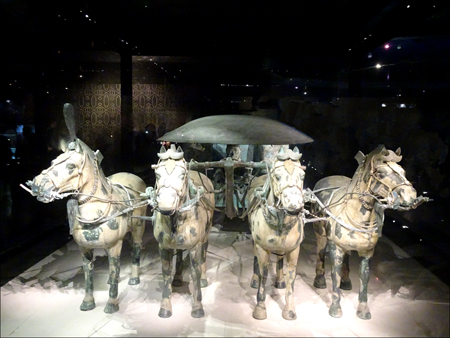
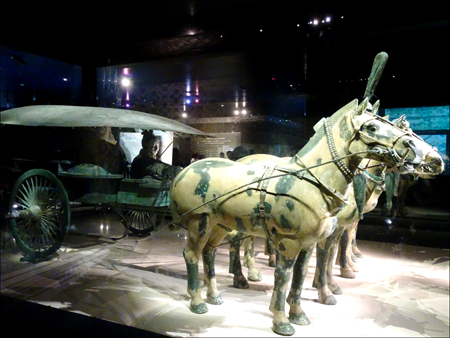
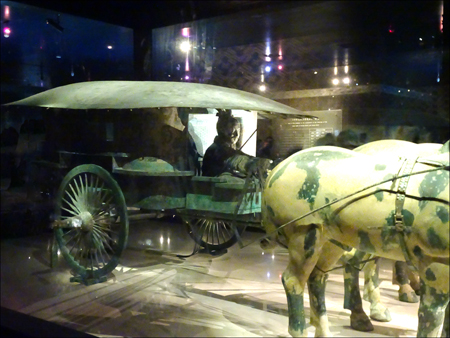
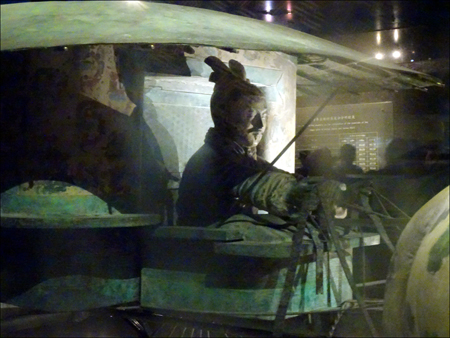
Chariot Two is larger than number one. The wagon has three windows and a door in the back. The windows and door are all workable. The curved roof is said to symbolize the round sky. The interior is said to be exquisite, but it was difficult to see inside the glass case. The horses are decked with gold and silver tack. It measures 10.4 feet long and 3.28 feet tall. 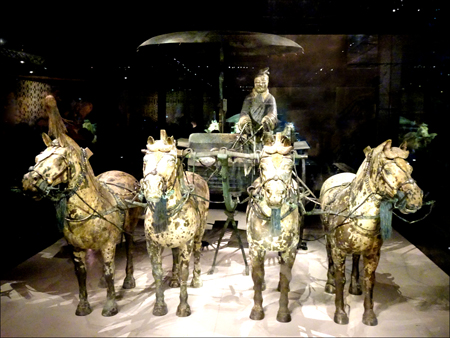
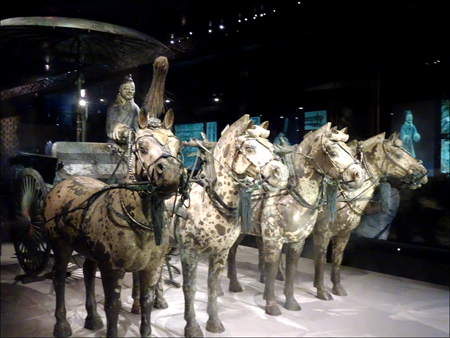
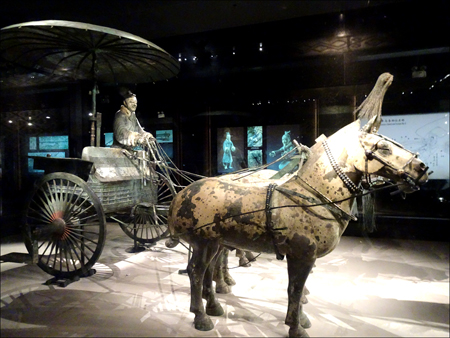
In researching this story, I found so much information on the Terracotta Warriors and their discovery. It's fascinating. Here is one incident that attests to the ingenuity of the Ancient Chinese. The swords found in Pit 2 were still sharp and smooth after being buried for 2,000 years. And the pliability of the bronze was still good. One of the swords was found bent with a 300 pound warrior resting on top of it. Once the warrior was removed the sword returned to its original shape. The swords were then analyzed and, to the scientists’ amazement, it was determined that the swords were coated with an oxide film containing 2% chrome. It seems chrome oxidation wasn't mastered until recent times, and needs complex equipment and processing. Click here for Postcards of The Terracotta Warriors Tang Dynasty Dinner and ShowAfter leaving the Terracotta Warriors exhibit, we drove back into downtown Xi'an and to the Shaanxi Grand Opera House for a traditional dumpling dinner and a show. 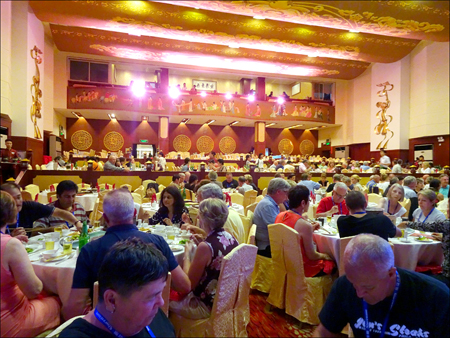
Dumplings are mostly various meats and vegetables minced finely and then wrapped in dough. They are then either steamed, boiled, pan-fried, or deep-fried. This restaurant made their dumplings in the shapes of the various things inside. We really enjoyed them. 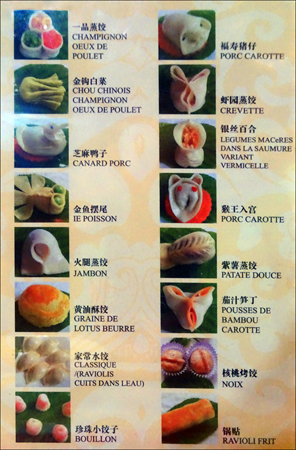
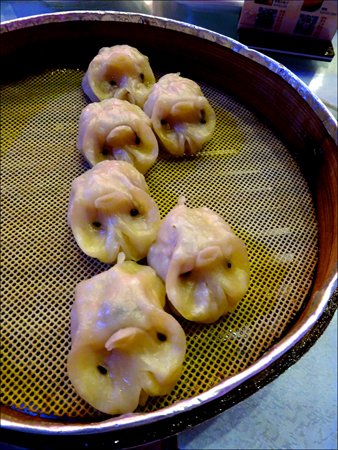
We were serenaded during the dinner by a woman playing the traditional Chinese instrument called a Guzheng. This is something like a zither. It dates back 2,500 years. It has a moveable bridge and is plucked. 
After dinner we were presented with a show telling the story of the Tang Dynasty. The musicians and dancers were wonderful. It was a totally delightful show. 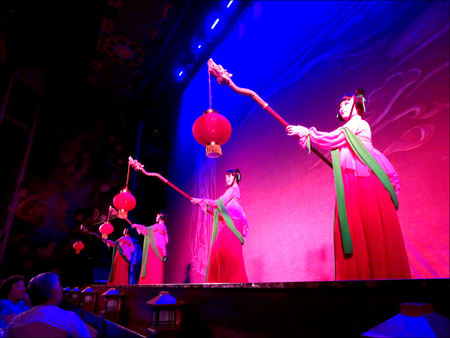
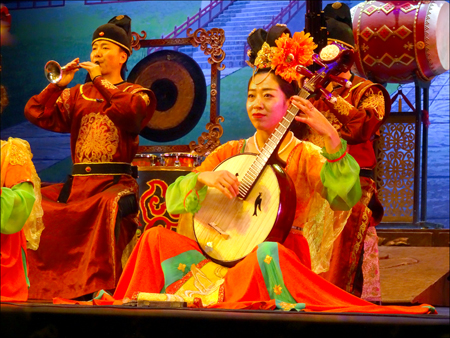
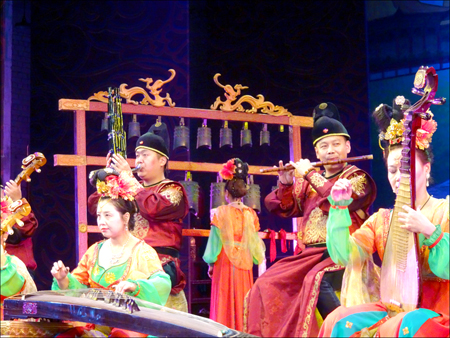
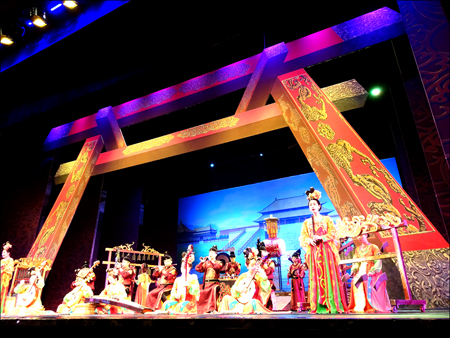
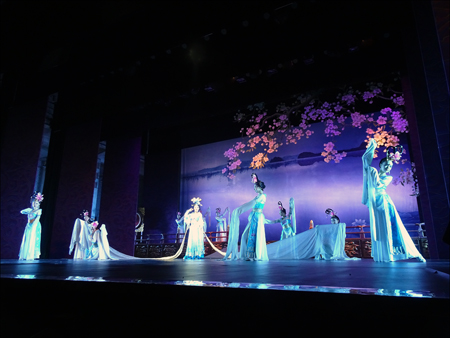
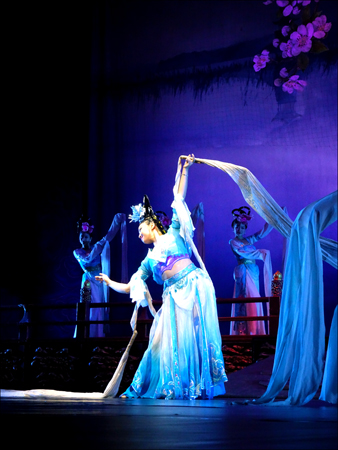
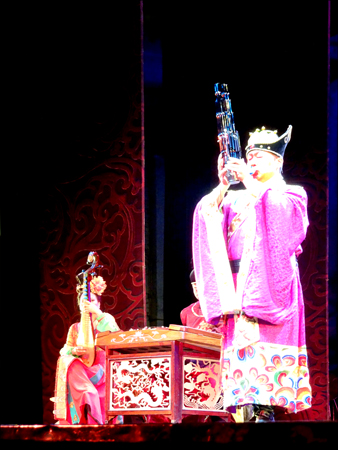
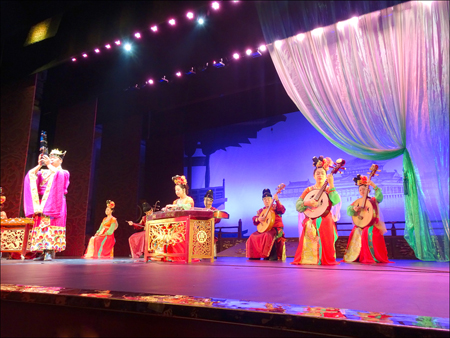
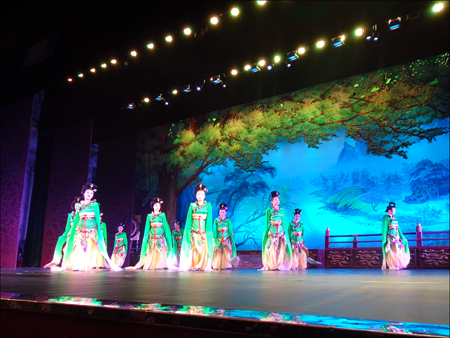
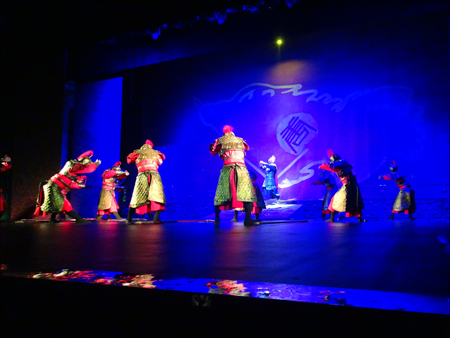
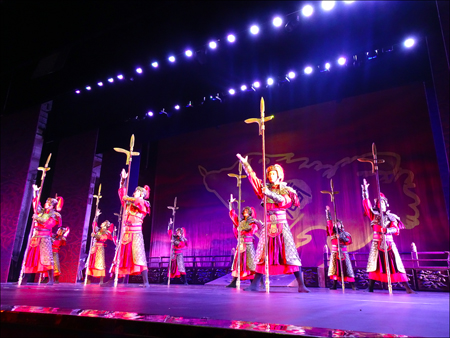

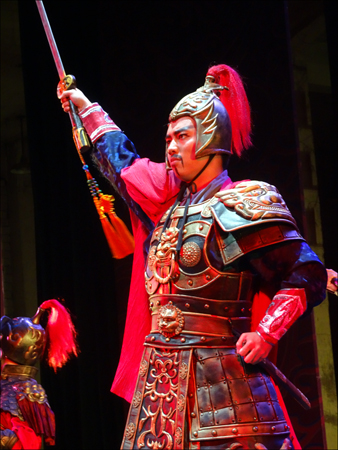
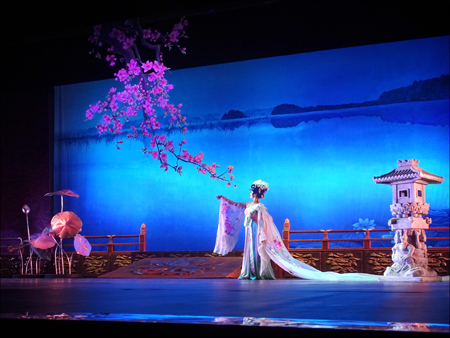
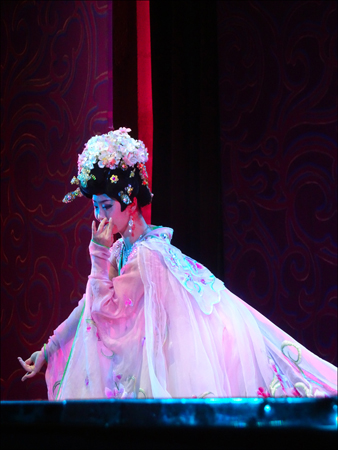
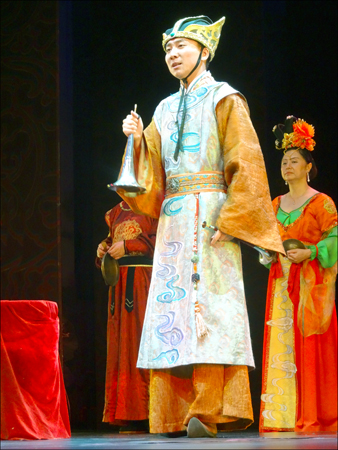
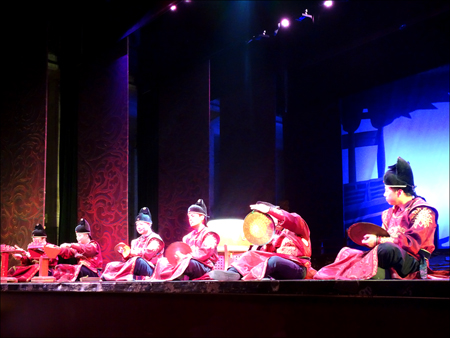
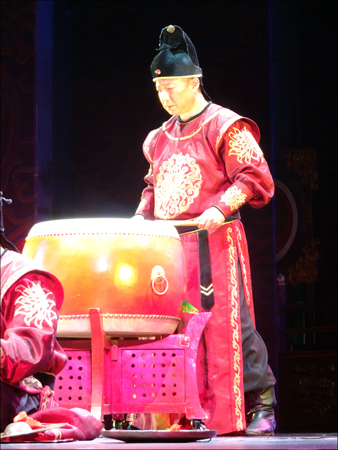
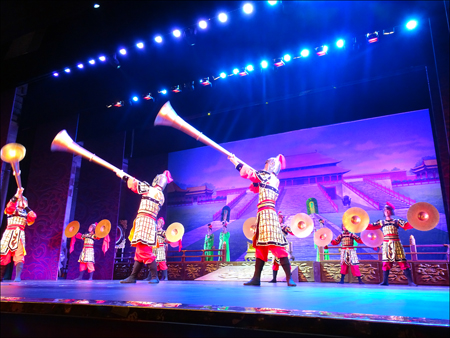
And now for a good night's sleep! |
|
| Home Previous Next | |
|
|

|
|
|
Irma Hale E-mail: Copyright © Irma Hale. All
Rights Reserved. Free counters provided by Vendio |